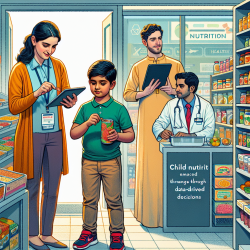Introduction
In the realm of language acquisition, understanding number agreement is crucial, especially in morphologically rich languages like French. This process involves learning the various forms a word can take, a field known as inflectional morphology or morphosyntax. For adolescents with Developmental Language Disorder (DLD), this learning curve can be particularly challenging. A recent study titled "Number agreement processing in adolescents with and without developmental language disorder (DLD): evidence from event-related brain potentials" sheds light on how these individuals process number agreement differently from their typically developing peers.
Key Findings
The study utilized event-related potentials (ERP) to examine the processing of three types of number agreement among French-speaking adolescents with and without DLD:
- Regular determiner agreement in noun phrases
- Regular subject-verb plural liaison
- Irregular subject-verb agreement
Results indicated that French-speaking teenagers without DLD are still consolidating their neurocognitive processing of morpho-syntactic number agreement, displaying ERP profiles typical of lower language proficiency than adult native speakers. Differences in processing between teenagers with and without DLD were primarily observed in rule-based (regular) number agreement, with little evidence for differences in lexico-semantic processing.
Implications for Practitioners
For practitioners working with adolescents with DLD, these findings underscore the importance of focusing on regular morphosyntactic structures during language therapy. Here are some practical strategies:
- Emphasize Rule-Based Learning: Since differences were noted in regular number agreement, practitioners should prioritize teaching these structures explicitly.
- Utilize ERP Insights: Understanding the ERP patterns can help tailor interventions that align with the neurocognitive processing stages of adolescents with DLD.
- Encourage Repetition and Reinforcement: Regular practice with feedback can help consolidate language processing skills.
Encouraging Further Research
This study opens avenues for further research into how different types of number agreement are processed in adolescents with DLD. Future studies could explore whether these processing differences persist into adulthood or whether they are indicative of a developmental delay that resolves over time. Such research could refine therapeutic approaches and enhance outcomes for individuals with DLD.
To read the original research paper, please follow this link: Number agreement processing in adolescents with and without developmental language disorder (DLD): evidence from event-related brain potentials.










